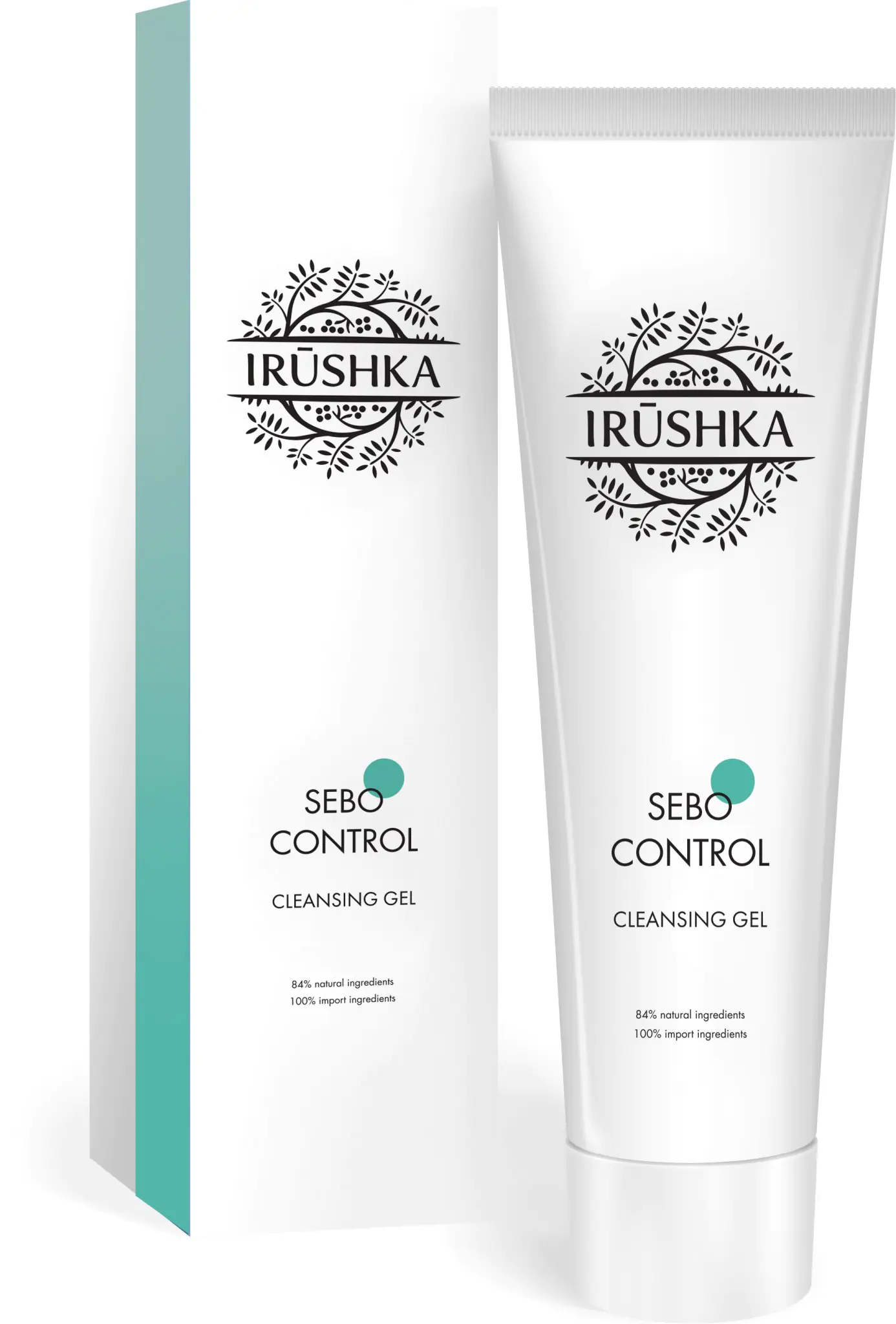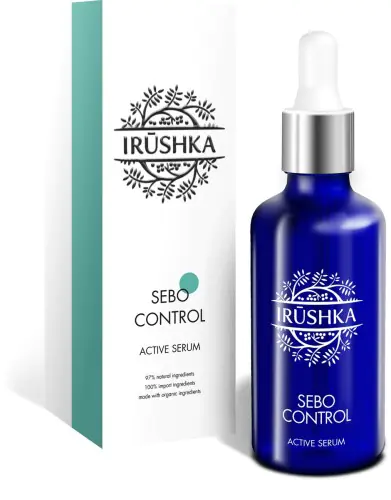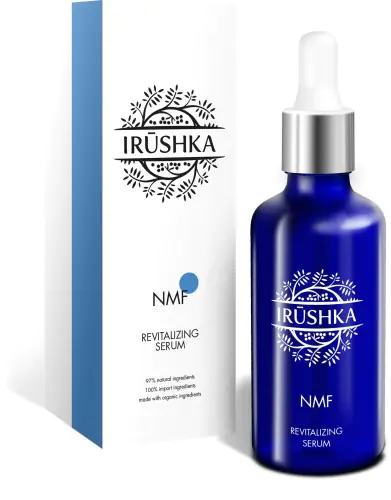Oily, dehydrated facial skin is the first sign that there is not enough moisture in the cells. A special approach will be a salvation for oily, dehydrated skin., which will help solve the problem, as a result of which the feeling of tightness, redness, blackheads, discomfort, mild itching will disappear, fine wrinkles will smooth out, and elasticity will return.
There is an opinion that dryness and dehydration are the same thing. This statement is fundamentally incorrect. Experts call skin "dry" when it doesn't produce enough sebum to lubricate and protect it. In turn, the dehydrated dermis suffers from a lack of moisture. Although dryness and dehydration often go together, they should be treated differently.
Why does oily skin dehydrate?
There can be many common reasons for dehydration of oily skin: poorly chosen diet, exhausting exercise. But most often, regular use of aggressive skincare products leads to dehydration of the epidermis.
Our body loses fluid constantly: through evaporation, sweating, excretion, as a result of the work of internal organs and cellular processes. Add to this the loss of moisture due to central heating, air cooling, air travel, sports, hot climates and air conditioning - and you have quite a large volume of fluid required for daily replenishment.
Greater physical activity and intense training increase these losses. The human body can also lose moisture due to certain diseases and taking certain medications.
Any skin type can face this problem. When the body lacks fluid, it is immediately reflected in the appearance; the dermis becomes dry, dull and tight, and may begin to peel off. Very often, dehydrated skin is compared to a desert, which is quite fair, because cells lose one of their main components - water. Because of this, the epidermis becomes thinner and the complexion becomes dull.
Symptoms of oily, dehydrated skin
How to restore oily, dehydrated skin
With complex effects, restoring oily skin after dehydration is a completely feasible task. First of all, it is necessary to ensure intensive hydration of the whole body, nourish the skin both outside and inside. It will also help to cope with the problem by understanding that this condition can be aggravated due to factors such as poor lifestyle, cold season, overheated and dry air in the room.
Drinking ration:
- Drink more if you are sweating. Be sure to drink water after physical activity and sports;
- Drink water throughout the day, preferably before you feel thirsty. If you are not used to drinking water in large quantities, you can drink a little, but often;
- For those who do not like to drink water in general, in this case, you can improve its taste by adding a little lemon or mint juice. You can also add a little fruit juice;
- Try changing the temperature of the water - many people are more willing to drink warm water than cold;
Always carry a water bottle with you as a reminder to regularly rehydrate your body.
Diet:
- Alcohol and caffeine have a diuretic effect, meaning that after consuming them, our body loses more fluid than usual. It can be replenished by drinking a glass of water after every cup of coffee or glass of wine;
- Consume more fresh, juicy vegetables and fruits, such as grapes, tomatoes, oranges;
To keep skin cells hydrated, water alone is not enough. We must consume enough “good” fats to ensure our bodies produce the fluid our cells need. Make sure your diet contains enough monounsaturated fats, such as avocado, olive oil and flaxseed oil.
External factors:
- Try not to stay in the sun for too long, especially without a hat and long sleeves.
- Do not sit for a long time near a heater or central heating radiator;
Remember that a running air conditioner absorbs moisture from the air, which means it deprives your skin of moisture. And a strong wind, no matter warm or cold, also dries it out. In rooms with operating air conditioning or central heating, it is necessary to use a humidifier, or simply spray water with a spray bottle;
Cleansing:
- After washing, pat the skin dry with a clean towel, but under no circumstances rub it. This will help retain moisture and prevent irritation;
- Do not wash your face with hot water, this will dry out your skin even more;
Choice of cosmetics:
Dehydrated, oily skin requires cosmetics that will not only replenish moisture, but also prevent its evaporation from the surface of the epidermis. To get rid of excess oily skin, its owners use too many cleansing and tightening products, which can ultimately dry out the epidermis and promote greater oil production to preserve the natural moisture of the cells. To avoid this, it is necessary to maintain the natural fat balance of the face, then its surface will be smooth and the complexion will be flawless.
Cosmetologists recommend performing moisturizing treatments for dehydrated, oily skin twice a day, morning and evening.
- Apply the cosmetic product to the previously cleansed dermis. Dirt and bacteria settling on the surface of the face penetrate through the pores deep into the epidermis, causing inflammation, pimples, blackheads and blackheads;
- Oil-free cosmetic cleansers are ideal as cleansers. As a rule, they contain salicylic or hyaluronic acids, sulfur, zinc;
- To refresh and remove excess sebum from the surface of the dermis, you can use an alcohol-based toner;
- Shea butter, mango and cocoa butter perfectly moisturize the skin and at the same time perform a barrier function. They act as a lubricant, making the skin more elastic;
- Use moisturizing creams that will help reduce the amount of moisture evaporating through the skin, and thus protect the cells of dehydrated, oily skin from drying out;
- After using aggressive scrubs, immediately tone and moisturize the skin;
Try to avoid cosmetics that contain sulfates. Their exposure negatively affects the skin's ability to maintain the required level of moisture.
Scrubs:
Most cleansers dehydrate oily skin because they contain alcohol, fragrances, dyes and other chemicals. All this only makes the problem worse. Natural cosmetics contain nourishing and moisturizing ingredients such as honey, yogurt and olive oil. Combined with natural exfoliating ingredients, they effectively cleanse the skin and remove dead cells.
Among other things, thanks to natural ingredients, these products have a pleasant natural aroma, and not the smell of a flavor added in the laboratory.
- With yogurt:
Place half a cup of oatmeal in a bowl. Add one tablespoon of natural yogurt at a time until a thick paste is formed. Wet your face with warm water, apply the mixture to the skin and rub in circular movements. Then rinse completely with water. This product will help oily, dehydrated skin absorb moisture.
- With honey:
Mix one tablespoon of oatmeal and one tablespoon of honey in a bowl. Add one teaspoon of heavy cream and beat using a blender. Microwave the mixture briefly, about 20 seconds. While it is still hot, rub it into damp skin and then rinse.
- With olive oil:
Place two tablespoons of olive oil, four grapes and one teaspoon of milk in a blender or food processor bowl. Whisk the ingredients thoroughly. Apply the mixture to a damp face, massage thoroughly into the skin, and then rinse.
Masks for oily, dehydrated skin:
Regular use of homemade masks will eliminate dehydration; such cosmetics will saturate the cells with moisture, restore elasticity, firmness and healthy color to the skin. They are easy to prepare from available products, the ingredients are practically free of allergens and irritants. The recommended course is two to three procedures per week for a month, after which take a break for 30 days.
- From coffee:
This product will relieve puffiness of the face and swelling around the eyes, giving the skin radiance and a healthy color.
Ingredients:
- finely ground coffee - four tablespoons;
- lemon juice - two tablespoons;
- unsweetened cocoa powder - four tablespoons;
- dairy product - eight tablespoons. Whole milk, heavy cream, natural yogurt without additives are best;
If you like egg masks, you can add an egg instead of a dairy product. If your skin is very dehydrated, milk can be replaced with olive oil. In this case, you need to take four tablespoons of oil, otherwise the product will turn out too liquid.
Preparation:
If you have coffee beans, grind them finely in a coffee grinder. Remember that the grind must be very fine, otherwise you may scratch the skin. If you've just brewed your coffee, you can use fresh coffee grounds as an ingredient, although they contain less caffeine. Mix coffee and cocoa in a bowl. Add the dairy product and stir until smooth. You can reduce the amount of milk, cream or yoghurt if you want the mixture to be denser. Pour in lemon juice and mix well again. Apply the product to cleansed skin of the face and neck. Let it dry. Gently wet the mask with a damp sponge, then rinse with warm water. Try not to rub the product in, especially if you have sensitive skin, as even finely ground coffee can scratch it. The remaining mixture can be stored in the refrigerator for several days.

Oily, dehydrated skin - a myth or a harsh truth for millions of girls around the world? Irina Nikolaeva, an expert cosmetologist and creator of the IRUSHKA brand, will help us understand this complex issue.
What is dehydrated skin? Same as dry?
Dehydration is not necessarily a sign of dry skin. This is a problem that can also arise for those with oily skin.
In fact, everything is a little more complicated than we used to think. In fact, there are many more skin types than three, but to make it easier to calculate typical problems (acne, rosacea, dehydration, etc.), these types are distinguished: dry, oily, combination. This makes it easier for an ordinary person to understand that if he has thick skin with enlarged pores, then he is more prone to acne than a person with dry and thin skin.
But in reality, acne can occur on dry skin due to external factors, and oily skin can be “dehydrated” under certain circumstances. But skin dehydration (dehydration) is a temporary skin condition, and not a characteristic of a specific type, that is, it is an acquired factor, and not a primary symptom.
How to “get” dehydrated skin? What causes dehydration?
There are a lot of factors. Dry skin is easier and more likely to become dehydrated, because... has a very thin and delicate outer layer, it is easier to “hurt” it. Incorrectly selected cosmetics, for example, a cleanser with too aggressive surfactants - cleansing ingredients, or products with silicone, or skin oils. External factors also play a role: illness, vitamin deficiency, allergies, dry air and air conditioners, the cold season - all this leads to dehydration.
But oily skin is just as easy to dehydrate. On the one hand, it is, of course, protected by the abundance of sebum, but this is precisely what “let down” many. The excessive desire of girls to reduce the amount of sebum on the face and neglect of moisturizers (one of the main phobias: a moisturizer will make oily skin even oilier) leads to dehydration. That is, using aggressive sebum-regulating skin products, girls artificially dehydrate their skin.
Therefore, you should take cleansing your skin seriously. Her health primarily depends on him. Under no circumstances should you listen to illiterate specialists and marketers from cosmetic companies who advise using leave-in cleansers. Any products, including milk and micellar water, must be washed off. If you don’t do this and use a tonic “on top,” then traces of surfactants, sebum and dust will remain on the skin. This leads to bacterial growth, acne and dehydration.
Can drinking water affect skin dehydration?
Just 2 liras of water a day will not save you; an integrated approach is important here. If you minimize negative external factors, drink enough water, do not smoke or drink alcohol, then the skin will return to normal and will be “saturated” with water, ceasing to be dehydrated.
What can cause dehydration in oily skin?
The three main “enemies” of oily skin are clay, soap and silicone. Clay (including kaolin) and soap (lye) draw moisture from the skin, so it becomes thinner, dull and gray, and looks like parchment paper. These ingredients accelerate the aging process and should be avoided in your daily skincare routine.
Silicone is a deception; it does not moisturize, but covers the skin with a film under which it cannot breathe. Because of this, blood circulation deteriorates - the skin becomes dehydrated, becomes dull and lifeless. Silicone also encourages the growth of bacteria – hello, acne!
What to do for oily, dehydrated skin? How to properly care?
If you have oily skin, but at the same time you feel tightness, you observe peeling and irritation on the skin, your skin is hypersensitive, with fine wrinkles - then all the signs of dehydrated skin are “on your face”. It's time to get active with hydration!
Firstly, do not abuse aggressive means to completely get rid of sebum - this will only worsen the situation. You should not visit a cosmetologist too often - any facial cleansing will also not help dehydrated, exhausted skin. Instead of cleansing, it is better to undergo superficial glycolic peeling procedures - if you are concerned about sebum and minor acne, for severe acne, opt for salicylic peels.
Secondly, actively moisturize your skin from the outside (with serums, emulsions or gels) and from the inside (we consume enough water). Don't be afraid - moisturizing will not cause excess sebum formation. Sebum is sebum, and moisturizing cosmetic products have nothing to do with it! Choose light textures that will not clog pores - this is important for oily skin.
Editorial Foodika tested several products for oily, dehydrated skin - a soft cleansing gel Cleansing Gel Sebo Control and whey Sebo Control from 
IRUSHKA. Both products are designed for oily skin, but their natural composition is so gentle that the products are perfect for oily, dehydrated skin. They will not aggravate the problem, but cleansing gel and serum will not be enough to fully hydrate the skin. Therefore, we recommend adding one of the products from the line for
dehydrated skin from IRUSHKA NMF Revitalizing: moisturizing serum NMF Revitalizing Serum or NMF Revitalizing Emulsion. But if you wish, you can use your favorite moisturizer or gel - Sebo Control serum 
prepares the skin and seems to multiply the moisturizing properties of any subsequent product. Use a cleansing gel, then a serum, then a “moisturizer”, and within a week you will notice qualitative changes in your skin: flaking and a feeling of tightness will go away, fine wrinkles will begin to smooth out, and your skin will become more velvety and healthy-looking!
I am a marketer by training, so I always have a “plan B” in stock and respect the numbers. Loves adventures, travel and extreme sports. Doesn't like to cook, but loves to eat delicious food. A fighter for goodness and justice, therefore she is 100% frank in her articles and reviews.
Myths and truths about caring for dehydrated skin
Answered by Yulia Chernysheva, national care expert at Lancôme
What is dehydrated skin and how to distinguish it from dry skin
Dehydrated skin is a common problem that almost every woman faces. Dehydration is a specific condition of any skin type caused by a lack of moisture, so both dry and oily problem skin can be dehydrated.
There are several reasons for dehydration:
- dehydration of the body - insufficient fluid intake
- incorrectly selected cosmetics
- smoking or alcohol
- exposure to dry air and UV rays
- age-related changes and decreased synthesis of hyaluronic acid
- poor nutrition
You can calculate dehydration yourself: focus on the sensations and appearance of your skin. There are several simple signs of dehydration:
- Feeling of tightness after contact with water: after washing your face, you want to quickly apply cream to relieve discomfort
- Rough surface: If you do not take action, peeling may appear on the face, which characterizes extreme dehydration.
- Dehydration lines: these are small wrinkles that appear both in areas with active facial expressions and throughout the face. Disappears immediately after applying the cream.
Dehydrated skin is sometimes called dry skin, although these are different concepts. The difference is that dehydrated skin needs moisture, and dry skin needs sebum and nutrients. Dry skin is a genetic trait. It primarily lacks nutrients, and the problem lies at the level of all layers of the epidermis, including the deep layers and dermis. Dehydration is a temporary condition of any skin type: oily, normal, dry. This is a problem at the level of the stratum corneum of the epidermis: the skin experiences only a moisture deficiency. Dry skin needs to be nourished and moisturized, while dehydrated skin needs to be moisturized and sometimes nourished.
Prohibitions in caring for dehydrated skin
When caring for dehydrated skin, you should avoid:
- soap
- alcohol tonics
- hard scrubs
- clay masks
- products with high acid content
- bathhouse
- washing with cold and/or hot water
Myths and truth about dehydrated skin
- Dehydrated skin is a sign of age
Facial skin can become dehydrated at 20, 30, and 40 years old. The reason is not age-related changes, but rather the aggressive influence of external factors (sun, wind, frost, improper care, and so on).
- Oily skin does not need moisturizing
This is one of the most dangerous misconceptions. As a rule, in pursuit of clean skin, daily care comes down to degreasing and disinfection. Active use of alcohol lotions, cleansing masks and aggressive peelings leads to disruption of the natural pH of the skin. As a result, oily skin becomes dehydrated due to weak local immunity and suffers even more from local rashes, peeling and hypersensitivity. Problem skin begins to actively absorb sebum, which it produces in excess. Because of this, it becomes porous, tight and inflamed. It is better to nourish and moisturize problematic dehydrated skin with creams that are light in texture and do not contain large amounts of oils and comedogenic ingredients. And also use moisturizing masks based on hyaluronic acid a couple of times a week.
- Dry skin does not need deep cleansing
Complete care for dehydrated facial skin should begin with cleansing. It’s just that dry skin needs softer product formulas, without abrasive particles and a pronounced absorbent effect.
What products and ingredients do dehydrated skin need?
- Serums and concentrates will help quickly restore hydration levels. Apply them twice daily immediately after cleansing, before applying cream (but not instead).
- Use moisturizing masks daily for two weeks until the skin recovers. Then switch to a regimen of 1-2 times a week.
- Choose moisturizing creams based on your skin type and apply twice a day to saturate your skin with moisture and retain it throughout the day.
Look for special ingredients in your day and night moisturizer formulas:
- Attracts and holds water: hyaluronic acid, glycerin, plant extracts.
- Sealing moisture by forming a thin, breathable film: oils, squalane, vitamin E.
The vitamins in the creams have a tonic effect, and SPF protects against the harmful effects of ultraviolet radiation.
Lancôme, Hydra Zen Masque Nuit, hydrating overnight mask, RUB 4,777.
La Roche Posay, Toleriane Sensitive Crème, 990 rub.
Thalgo, soothing SOS mask Cold Cream Marine, RUB 2,700.
Aveda, Tulasara restorative mask, RUB 4,500.
Avon, face cream with aloe and cucumber “Moisturizing”, 190 rub.
How to properly cleanse dehydrated skin
Using even the most effective creams will not give any results if the skin is not properly cleaned. This is the first and, perhaps, the most important stage in caring for dehydrated skin. Cleansers must have a neutral pH and do not contain alkali or aggressive surface-active components (surfactants). If your skin is severely dehydrated, switch to washing your face without water: use milk and toner without alcohol.
Hirst Shkulev Publishing
Moscow, st. Shabolovka, building 31b, 6th entrance (entrance from Konny Lane)



